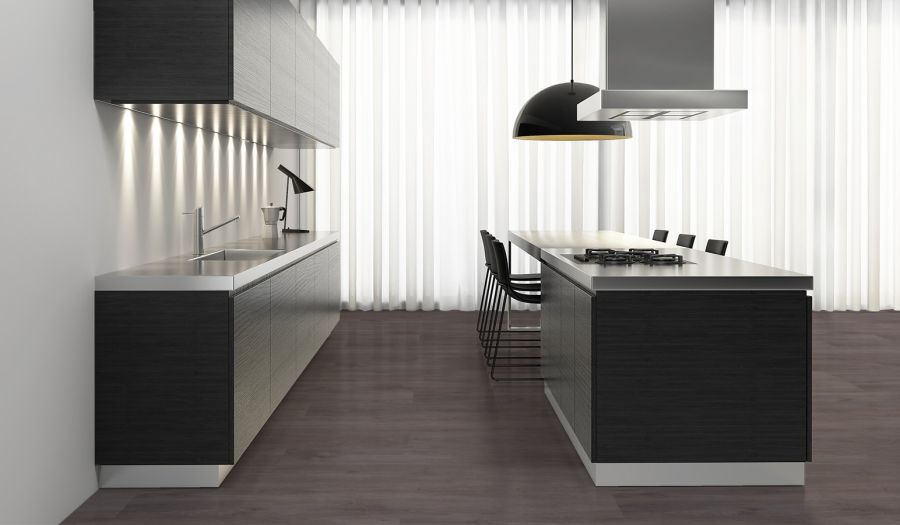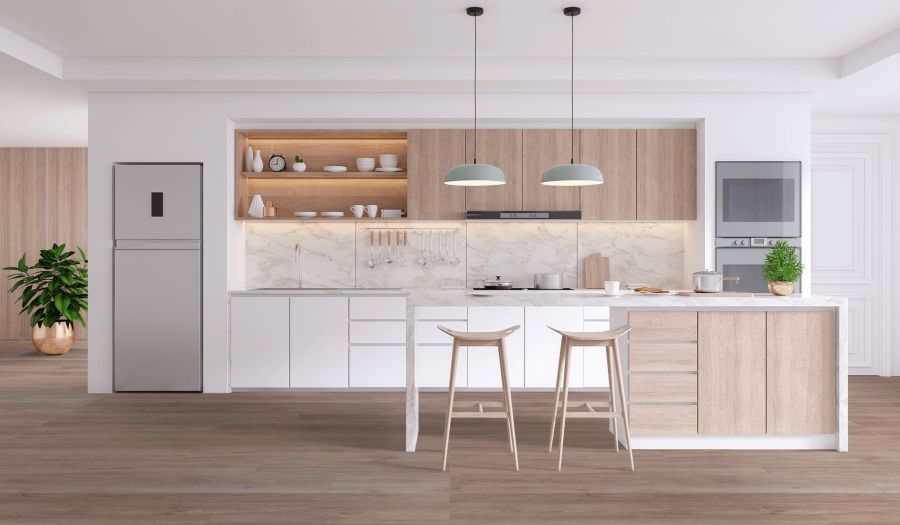
Best Flooring for Your Kitchen: We Explore Vinyl Flooring Versus Tiles
Most of us grew up around tiles – whether this is the weathered and chipped floral tiling in our grandmother’s bathroom or our childhood home’s kitchen floor that took the brunt of many messes. For many years, tiling has been a preferred surface when it comes to just about any area of the home, and rightfully so – they are easy to clean and look great. What if, however, there were a product that looked just as superb and came at a fraction of the cost? Fortunately, there is – vinyl flooring not only replicates the look of authentic wood and ceramic tile floors, but it won’t break the bank, either. If you are curious about the differences between vinyl flooring and ceramic tiles, then keep reading below to discover why we at Top Carpets and Floors are strong advocates for vinyl tiles within any kitchen.
Why Tiling Was Popular in the Past
Tiles, whether ceramic, stone and even glass, have been around for thousands of years. From Ancient Egypt and Rome to the medieval period where potters would create them from handmade clay, tiles have remained, for the most part, an unchanged concept. The Victorian era saw a spike in popularity when it came to wall and floor tiles, and since then, high demand has resulted in mass production. Tiles are convenient, after all – they are not too challenging to keep clean, and with beautiful designs that range from intricate artistry to a more natural “stone” feel, they work well in most kitchens. They do not, unfortunately, compare favourably to new and improved luxury vinyl flooring in all departments, and they are losing much popularity due to how well vinyl tiles are currently trending.
What Installation Looks Like
When it comes to installing ceramic tiles, the process can become rather complex and messy. Often, professional contractors are called in with specialist power tools, hammers and chisels to tackle the labour-intensive task. Mortar and grout must be mixed and properly applied to ensure a seamless application because shoddy work will show up easily in the final result. The toxic dust created while breaking the tiles settles in the home or building long after installation, and clean-up can take weeks. Vinyl tiles are DIY-friendly (though professional help is always recommended) and installing them is a far more streamlined effort. Not only does vinyl flooring take less time to install (vinyl planks or tiles are simply laid out and bonded into place with an adhesive), but it makes less mess too, and is waterproof. Clean up after installation is hassle-free, and the whole process can be completed within a few hours, depending upon the size of the kitchen.
Long-lasting Durability or Long-time Eyesore?
Both vinyl flooring and ceramic tiles are considered durable, waterproof, and stain-resistant. Ceramic tiles are exceptionally long-wearing, however, but this is not always considered a good thing. Style trends change over time, and what may look great today is already considered old-fashioned in five to ten years. There is no telling how your preferences will change over the next decade, and what may seem like an investment now could be the cause of your home’s financial value decreasing in the future. Replacing ceramic tiles once they are outdated is a costly undertaking that takes time, whereas vinyl flooring is easy to remove and replace whenever something more suited to the times starts to trend.
A kitchen is also a part of the home in which a lot happens, and dropping a heavy appliance, pot, or even mug at the wrong angle can cause the tiling to chip or crack. This can be difficult to hide or repair without replacing the whole tile – and if this kind of tile is no longer in production, the entire floor will need replacing. In fact, cracks are a major reason why more and more customers are opting for durable and waterproof vinyl flooring.

Keeping Aesthetics in Mind
While nothing will emulate the look and feel of ceramic tiles 100%, vinyl flooring comes exceptionally close. An untrained eye is not likely to spot the difference, and vinyl flooring is ideal for anyone who enjoys customisation. This is because vinyl tiles come in a vast array of styles and colours, and mimic stone, ceramic and even wood with much accuracy. This is also the preferred option for homeowners who want wood elements in their kitchen or bathroom but cannot install real hardwood in these high-moisture areas. If keeping up with interior design trends are important to you, then vinyl tiles are an easy and affordable option to change as the need arises.
What About Environmental Impact?
Strictly speaking, ceramic can be recycled, but because this would entail removing all mortar and grout, it is not a process anyone would undertake. Smashed and removed tiles often end up in a landfill. Installing and removing tiles also creates clouds of dust that may pose a respiratory hazard. Vinyl flooring, on the other hand, is usually recyclable and creates far less mess.
Here at Top Carpets and Floors, our product range boasts beautifully designed vinyl flooring options such as vinyl tiles, luxury wood vinyl, vinyl sheeting and cushion vinyl.
If you're looking to understand a little more about what goes into the cost of flooring, then click the button below 👇 to get your hands on our handy pricing guide.


